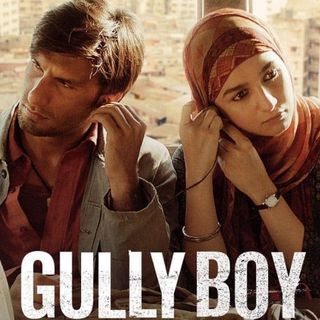
Ranveer Singh Is Mainstreaming Dandyism
Dressing in skirts and patialas, Singh’s sartorial sense is defined in opposition to conventional masculinity.

Ranveer Singh’s fashion sense is often called ‘quirky’ or ‘bold’ or ‘flamboyant.’ Which is fair — how many men in Bollywood pose for magazine shoots in kimono dresses or silk-georgette pussy bow blouses? Singh’s wardrobe choices during his current tour of the international festival circuit to promote his latest project, Gully Boy, have garnered almost as much press as the film itself. The slew of bright yellow and orange puffer jackets, pink berets, and chunky orange sunglasses was all over the internet. And let’s not forget the Manish Arora shaggy blue faux fur jacket he wore at the Berlin International Festival (very reminiscent of Sullivan from Monsters, Inc.) thathad #SullyBoy trending on social media. His outfits are kaleidoscopic, overwhelming, and always make a statement — whether you love or hate Ranveer Singh, you really can’t ignore him.
And while some might say that Singh’s looks are “the sartorial equivalent of a car crash,” I’m here to assert the following: Ranveer Singh’s penchant for over-the-top, gender-bending clothes, his attention to his appearance and perception, and the performance of his public persona all point to one conclusion — that he is India’s modern-day dandy. And I’m ecstatic about it.
*
The figure of the ‘dandy’ originated in early 19th-century Britain, where self-made men strove to imitate aristocratic lifestyles by caring fastidiously about their appearance and clothes, valuing an elegant aesthetic above all else. Since then, dandies and fops have often been found among prominent artists and writers, including Charles Baudelaire, Salvador Dali, and Oscar Wilde.
While the dandy might feel like a fussy, anachronistic character, over the years, he has come to stand for something more subversive. The legacy of dandyism, from the early days of industrialization, when mass production meant everything (and everyone) looked alike, was to break the mold by creating something more messy and complex. Individual creative expression was valued far more by the dandy than the simple binaries afforded by conventionality.
Related on The Swaddle:
‘Gully Boy’ Subverts Some Gender Stereotypes, Reinforces Others
Dandyism isn’t just about defining oneself through the aesthetic, but defining against a certain aesthetic as well — and most often, it’s against the very toxic version of conventional masculinity. In his 1951 book-length essay, L’Homme révolté, Albert Camus writes that the dandy is “only coherent as an actor. But an actor implies a public; the dandy can only play a part by setting himself up in opposition. He can only be sure of his own existence by finding it in the expression of others’ faces. Other people are his mirror. […] The dandy, therefore, is always compelled to astonish.”
Essentially, dandyism is a rebellion from the mainstream. The outfits and affectation are there to provoke and push boundaries. And Ranveer Singh’s sartorial sense is, arguably, one of the most astonishing in Bollywood right now. The mold of the Salman Khan-esque ‘hero’ of hypermasculinity stands in stark contrast to Singh’s persona and presentation. There’s something more slippery, more indefinable at play there. And while onscreen, Singh might be playing into those age-old gendered Bollywood tropes, off-screen it seems as though he is actually challenging a lot of those notions.
*
The modern dandy is a gender-bending, glam rock darling, mutable alien being. I’m thinking of David Bowie’s platform-wearing Ziggy Stardust, or Prince’s pirate blouses and crop tops. Androgyny is fast becoming a high fashion staple with menswear lines embracing floral prints, jewel-toned silks, and feminine silhouettes. The boundaries between men and women’s clothes are being blurred by designers like Palomo Spain, whose New York Fashion Week show on 5 February firmly established menswear as no longer just for men. The trajectory of the dandy, then, has been one that is edging from the fringes to the mainstream. “I’d almost say every man under 30 is a dandy today,” Daryoush Haj-Najafi, former style editor for Vice, told the BBC. “Everyone wants to be beautiful these days.”
Whether he’s doing this consciously or not, it’s indisputable that Ranveer Singh is bringing that fluidity and beauty to Bollywood. And considering how much value we place in our onscreen idols, having someone, with the kind of star power that he has, question the necessity of ‘macho-ness’ to Indian masculinity is incredibly valuable. Dressing in skirts and patialas, with his handlebar moustache and kajal around his eyes, Singh bends the idea of what Indian men can aspire to look like. There is no signature look for him because that would mean there’s only one way to be. Ranveer Singh, as the modern Indian dandy, is showing us that masculinity can encompass a multiplicity.
Nadia Nooreyezdan is The Swaddle's culture editor. Since graduating from Columbia Journalism School, she spends her time thinking about aliens, cyborgs, and social justice sci-fi. She's also working on a memoir about her family's journey from Iran to India.
Related


The Buzz Cut: Listening to Lady Gaga’s Grammy Speech About Mental Health on Repeat
